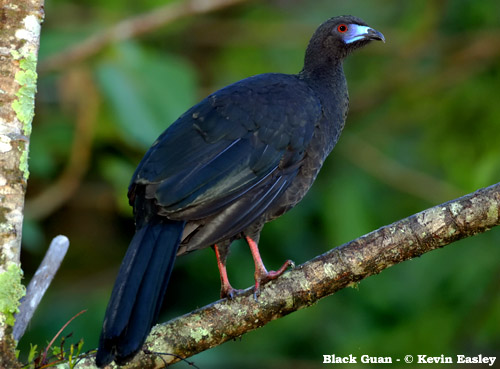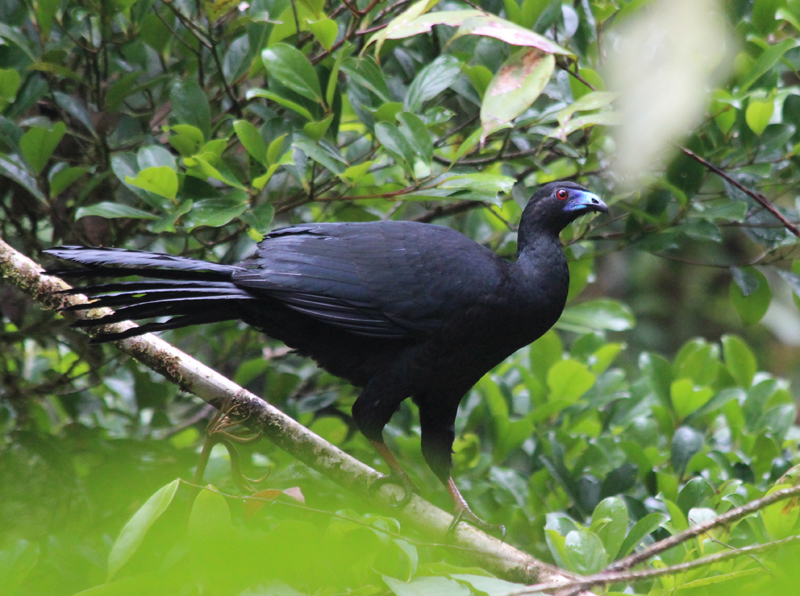
Chamaepetes unicolor
SUBFAMILY
Penelopinae
TAXONOMY
Chamжpetes unicolor Salvin, 1867, Veragua. Monotypic.
OTHER COMMON NAMES
English: Black sickle-winged guan; French: Pйnйlope unicolore;
German: Mohrenguan; Spanish: Pava Negra.
PHYSICAL CHARACTERISTICS
24–27 in (62–67 cm); 2.4–2.6 lb (1.1–1.2 kg). Male is completely
black with a bare blue facial patch.
DISTRIBUTION
This species is restricted to Costa Rica and western Panama.
HABITAT
Found in montane forest above 3,300 ft (1,000 m) in southern
Central America.
BEHAVIOR
Black guans are one of the few cracids known to live singly
outside the breeding season and are found in pairs only during
the breeding season.
The black guan’s wing sound is quite different compared to
the crested guan. When this bird, in its long glide, has reached
the middle of a clearing, it beats its wings rapidly over a short
stretch in such a way that the longer feathers alternately separate
and beat together. Thus it produces a wooden-sounding
clatter of surprising loudness, which can be imitated by drawing
a thin, narrow piece of wood over an iron grating or by
holding it against the spokes of a wheel.
FEEDING ECOLOGY AND DIET
Generally fruits, also seeds and several species of plants. Forages
singly, in pairs, or in small groups.
REPRODUCTIVE BIOLOGY
Clutch size is typically two to three eggs. Downy chicks are
brown with striped pattern on the head.
CONSERVATION STATUS
Considered Near Threatened, this species is threatened with
HABITAT
destruction, and is vulnerable because it is restricted to
montane forests at 3,300–8,200 ft (1,000–2,500 m). Furthermore,
it is endemic to a small region of Costa Rica and
Panama. Nonetheless it might be locally common in at least
some regions where it is protected. For example, in the early
1990s densities were approximately 7.4 birds per km2 at the
Monteverde Cloud Forest Reserve in Costa Rica.
SIGNIFICANCE TO HUMANS
None known.
Other popular Animals
Photo Gallery of - Black guan




 Animalia Life
Animalia Life